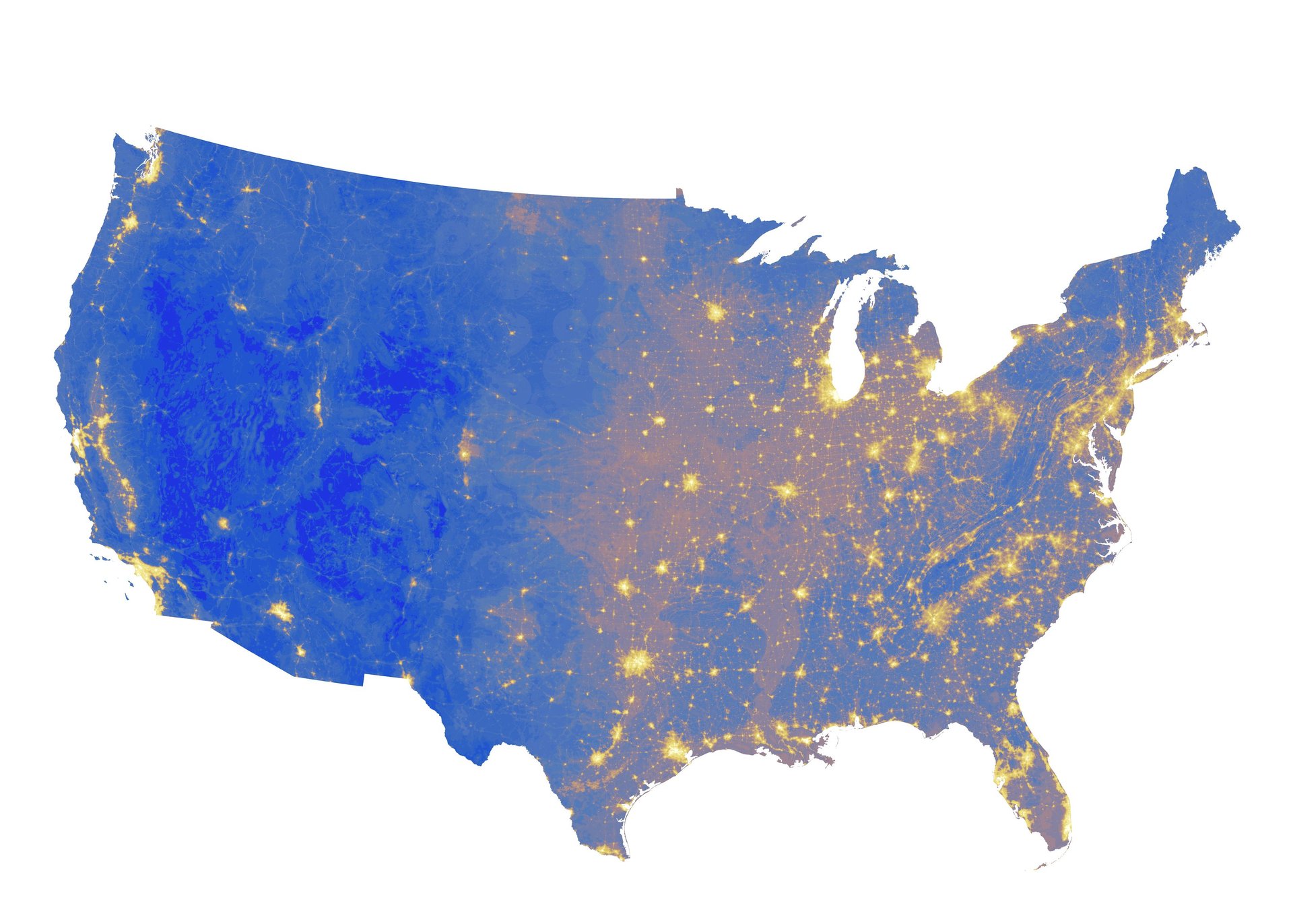Mapped: These are the quietest spots in America
If you want some peace and quiet, get away from people and water and trek to the valleys in between western US mountains.


If you want some peace and quiet, get away from people and water and trek to the valleys in between western US mountains.
The US National Park Service released new maps of the loudest and quietest parts of the country, and the winner for the quietest overall area is the Basin and Range region, which includes a number of mountain ranges stretching from Southeastern Oregon into Utah, Idaho, and Nevada, says Kurt Fristrup, a senior scientist in the park service’s Natural Sounds and Night Skies division. Fristrup’s maps, presented at the American Association for the Advancement of Science conference on Feb. 16, have been making the rounds.
Researchers used sound data collected from 546 sites around the US over the past 10 summers, then estimated the noise levels in the remaining areas based on factors like population density, roadway sizes, and proximity to airports, Fristrup tells Quartz.
In natural landscapes without human interference, water is one of the greatest contributors to sound—not only the sound of water rushing by in a river or of rain falling, but the vegetation and animal life that it facilitates, Fristrup says. The presence of water even carries into the sound wind makes as it whooshes through high vegetation. In these mountain basins and desert areas like the San Louis Dunes in Colorado, the wind makes less noise because there are no leaves to rustle, he says.
That’s why, if you look at a map of the US that eliminates humans’ modern contributions to noise, those mountainous areas were still the softest.
And of course, the quietest spots today avoid the loud trappings of big cities—population density, cars, planes—that come with people and technology. The highest decibel level the environment reached without human interference was 40, compared to up to 67 decibels for the loudest areas today, which are largely urban, Fristrup notes.
“When you move into noisier environments that soundscape contracts and gets quite small, much like [how] on a foggy day the landscape gets very small because you can’t see very far,” he says. So in the quietest areas, the phrase “you can hear crickets” actually takes on some meaning. “You might hear one cricket chirping. And when you look around or listen you realize it’s a football field away from you,” he says.
Making cities quieter would be possible with some collective effort, he says. For instance, homeowners could use electric appliances that are quieter, and drivers could cruise at the speed limit since faster cars make more noise. Even designating quiet zones in parks would help, as people tend to pay attention to those and change their behavior according to signage, he says.
The extra effort could pay off. Research suggests that high levels of ambient sound can increase stress and hurt creativity (it should be noted that these maps measure the median level of sound, while the research linked define a high level of noise as above 85 or 90 decibels).